Some of my posts do go on a bit, you may need the “patience of a saint”, sometimes I ask myself the question, ” Is anyone really going to read this ?”
It is really nice when I get a compliment, so thank you to those that have told me to keep plugging away. The Samaritans certainly don’t need a call from me!
This will be another one of my longer posts so it will be split up like some previous ones, into, two parts.
Initially I thought I would start with the early stations and take the chronological route, as there has been roughly three building phases, 1850’s , end of the 19th /early 20th century and then the 1950/60’s but I have succumbed to the easy option of just doing it by Towns.
Part 1 will have information and photographs on, Dorchester, Beaminster, Bridport, Lyme Regis, Cerne Abbas, Wareham, Swanage, Blandford, Sherborne, Shaftesbury, Sturminster Newton and Gillingham
Part 2 will carry on with, Gillingham, Cranborne, Wimborne, Poole, Branksome, Parkstone, Portland and Weymouth.
What you will find is that most of the original stations are still standing, I am not sure whether that is down to now being listed buildings, but they certainly seemed to be of much better construction than many younger ones which have been demolished.
It is now the year 2020, we now live in times when there are less police officers and fewer police stations, especially manned ones. Technology is a wonderful thing. I hope you enjoy a trip down memory lane and contact me with your memories.
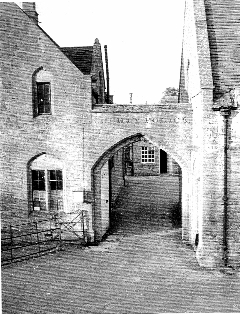
The Police Committee of 1856, at the mid summers quarter session appointed the first Chief Constable and agreed on, the amount of men, their wages and means of transport. The Chief Constable then had the task of finding the right men for the job and the dispersal of his personnel throughout the County and straight away find the land where new police stations could be built and where the officers could be housed.
By the end of 1856, 10 Supt’s, 5 Sgt’s and 88 constables had been employed. According to figures agreed that meant that two more Sgt’s and Constables were still required.
At that time, there were few stations, very few lock ups and in some towns the Petty Sessions Courts were still being held in public houses.
There was a requirement for new stations at be built at Dorchester, Beaminster, Cerne Abbas, Wareham, Blandford, Wimborne, Cranborne, Sturminster Newton, Sherborne and Shaftesbury. In other forces which had recently been founded, lock ups were being built attached to station houses which was thought to be a good idea, however attaching court houses was difficult, due to being within two different financial budgets.
Next was the problem of consolidating the Force so attention was turned to getting the police of the other Municipal Boroughs within the County to amalgamate.
These Boroughs were Blandford, Bridport, Dorchester, Lyme, Poole, Shaftesbury and Weymouth (which including Melcombe Regis).
All the Boroughs at that early point appeared to seem happy to acquaint themselves with the County Force after reading the terms involved. Basically the terms were, that their Boroughs should be watched by night and day and establishing how many men were required to police them. At the time Blandford were to have two men, Bridport one Sgt and four men, Dorchester four men, Lyme Regis two men, Weymouth and Melcombe Regis one Sgt and eight men.
The County Force would also be able to use their lock ups free of charge and that the appointment of their men fell with the Chief Constable.
Several Boroughs towns decided that these terms were unacceptable especially where constables in Poole and Weymouth were paid more.
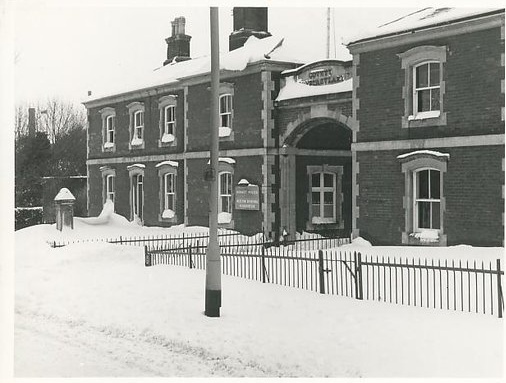
Over the next five to six years the stations and their sites were discussed and between 1861 and 1862 these station houses were all completed at a cost of eighteen thousand, six hundred and five pounds, eleven shillings and three pence.
This total included the cost of sites, buildings, fixtures and fittings plus painting and papering but excluded the Justice Rooms or Court Houses at an average cost of three hundred pounds each.
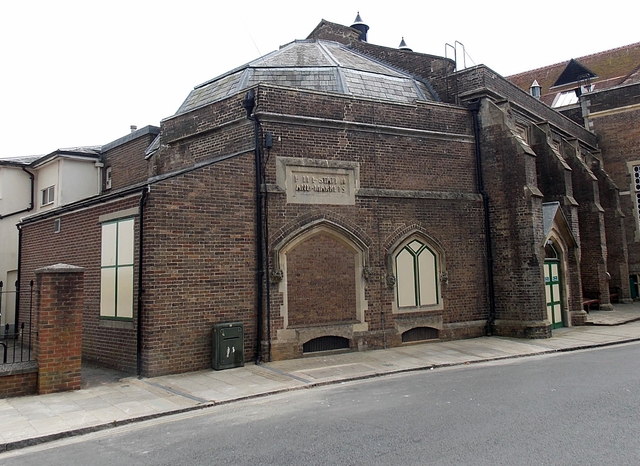
Prior to the County Constabulary being set up in 1856, the Dorchester Borough Police Force which was set up in 1836, were based in North square at the rear of the Corn Exchange and close to the Prison, which is now disused. There is still an inscription in the stone work on the premises ( above) which still bears the legend “Police Station and markets”. The Borough police force amalgamated with the County Constabulary in April 1889.


In January 1857 the petty sessions were held at the county hall and there was no lock up facility. A site was thought to be difficult to purchase as there was little room to extend the gaol belonging to the county. After the Chief Constable and the county surveyor checked possible sites over the next two months a site was still not established as suitable. A site was required for buildings consisting of a residence for a married Supt, a married clerk, with offices for the Chief Constables clerk, store room for clothing, a barracks for six constables, a lock up with three cells, a coach house, stabling for four horses and residence for a drill instructor.
It was decided that Dorchester would be the headquarters of the Force and as a residence of the Chief Constable.
The Police Committee had first proposed that they buy Woolaston House in Durngate Street and to rent, at a suitable figure, outbuildings and grounds for the use at the Militia depot of the Dorset Regiment. However this project did not materialise, so after a long delay, a site was eventually acquired from the Duchy of Cornwall in Fordington field in 1858 for one hundred and eighty pounds, immediately adjacent to Maumbury Rings in Weymouth Avenue. The original buildings, where the frontage still stands today, were completed in 1861.
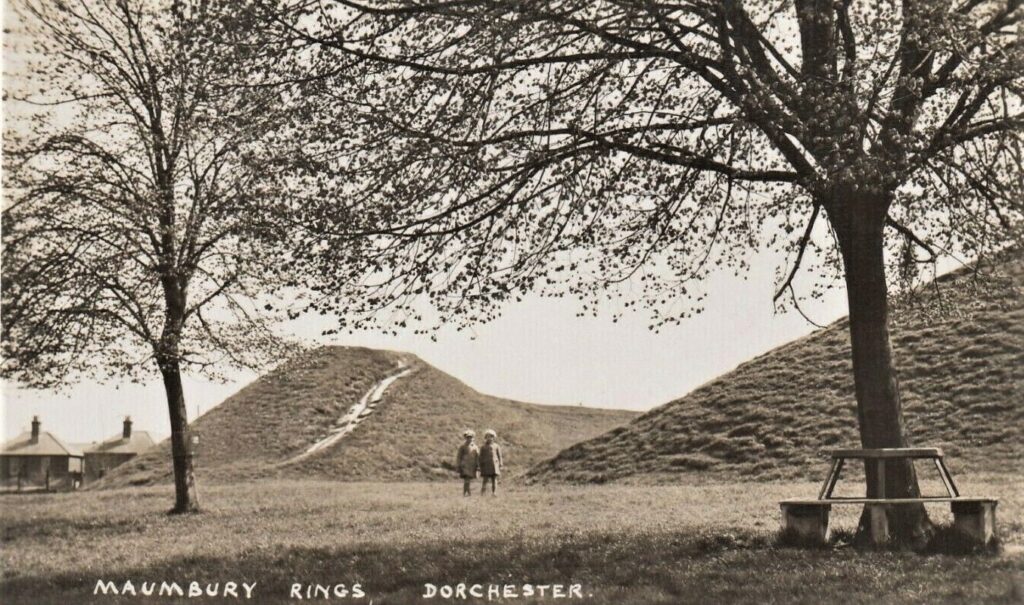
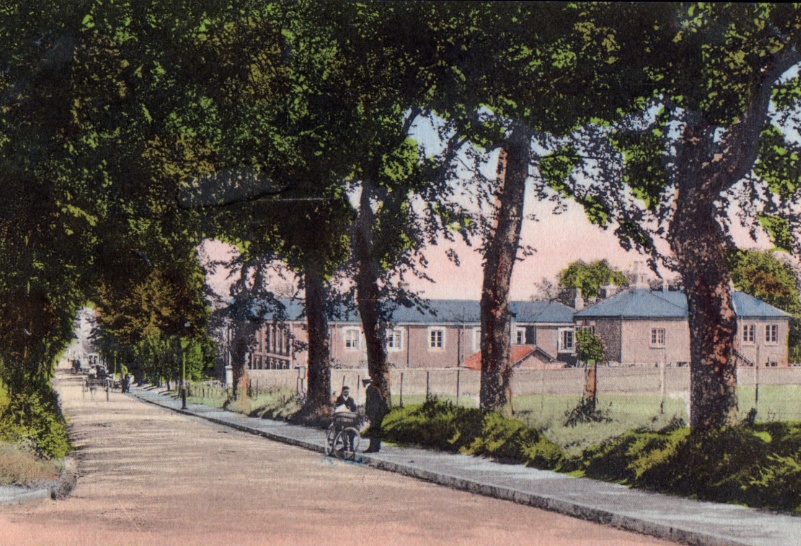
The above postcard drawing shows the original L shape, the frontage was where the Supt and sergeant lived with the single man’s quarters backing on to Maumbery Rings. At some point a large house was also built backing on to the Rings (far right above) which I believe was built to house the Deputy’s family.
The local police station in Dorchester after North Square was in Glyde Path Road and that building was used up until 1929/1930 when it was decided it was too small so a tender was put out for a builder to add extra accommodation at Headquarters. Unfortunately so far I have not found a photograph of the Glyde Path station , even though Vic, my grandfather worked there from 1923 to 1925.
Other small additions were made over the next fifty years to the HQ site and in 1930 a single storey building was erected for the Dorchester Divisional HQ and demolition of the stabling, which replaced the old town station on Glyde Path Road where there were cottages for two Sgt’s together with a small charge room and three cells but the Supt’s office was still in Weymouth Ave, adjoining his house. The Glyde Path station was demolished for the then existing Dorset County Clinic next to the County Hall.
At the HQ the single storey building built in 1930 has an upper floor added and on the eastern side of the yard a new HQ block was erected for garages and workshop for running repairs after WW2. More alterations to the living quarters were needed by 1952 and when excavations started adjacent to Maumbury Rings, this revealed the remains of several roman skeletons, with similar aged pieces of jewellery and coins, and also a gulley which led from the Brewery to the Amphitheatre with a gun emplacement on the southern end. With a new HQ at Winfrith found in 1977 the site was then occupied as the Western Divisional Command and the new HQ site was officially opened in March 1978 by the then Duchess of York. Here are some recent photographs of what is still left of Dorchester, the original buildings.
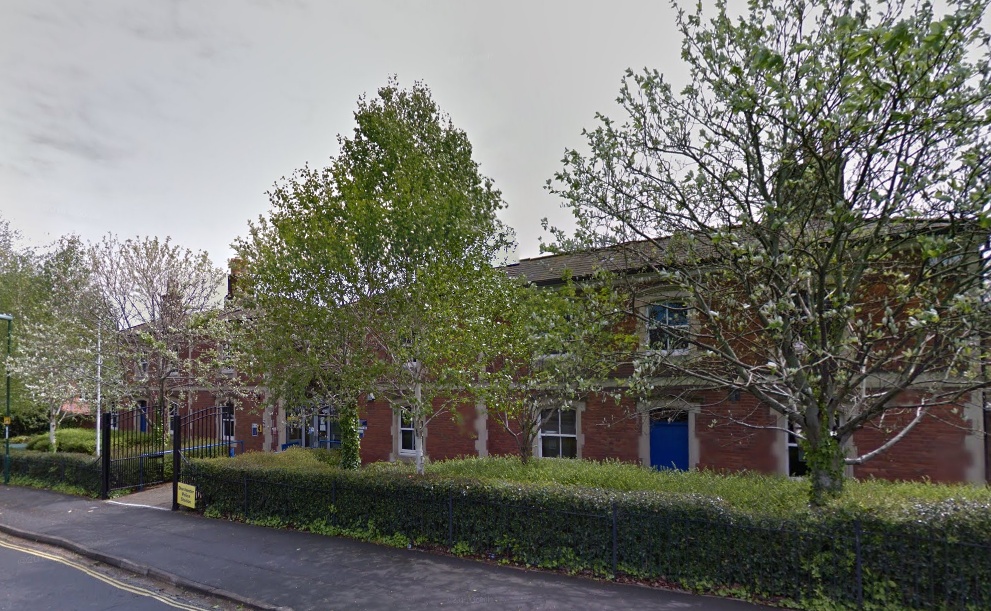

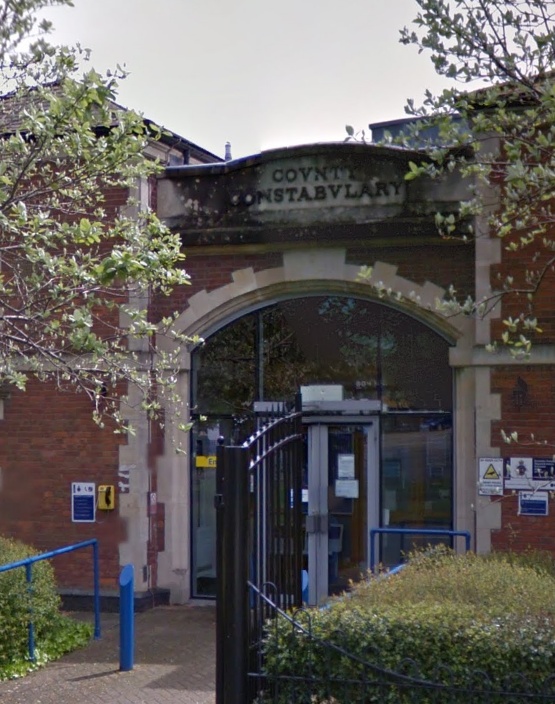
BEAMINSTER / BRIDPORT
————————————
Beaminster was the western Divisional HQ for the county which included the boroughs of Bridport, Lyme Regis and Beaminster rural districts.
In Jan 1857 the Town hall at Bridport and the Red Lion at Beaminster were used for the petty session courts and neither had a lock up. A building at Beaminster was found, which could be purchased at a low rate which could easily be converted into a residence for two constables, with cells, airing yard, coach house, stable and large apartment which might be used for holding the petty sessions.
The Chief Constable who was from Beaminster, and the county surveyor checked other possible sites and decided the above described site, which was a large house with a large yard was not ideal but could be adapted and so it was purchased for 600 pounds.
They realised if another 350 pounds were spent, it could be converted into accommodation for a married Supt, two constables (one married), lock up of 3 cells, with a stable and cart house. By all accounts, it appears the conversion took a long time, cost 550 pounds and this work was completed by local builder David Hann, an ancestor of Melvin Hann, ,who compiled “Bobbies on the Beat” 150 years of Dorset Police.
The Divisional HQ at Beaminster was an old brewery premises at Prout Bridge, opposite the DuPont industrial premises. The buildings were converted into a Supt’s, a Sgt’s and a Constable’s residence with office and charge room and a large upper room was used as a Magistrates court. There was also stabling for two horses attached containing a double trap which was needed due to the steep hilly district and difficult terrain for the Supt to traverse in supervising his men.
The last Supt was Arthur Percy BECK who then moved to the new divisional HQ, when it was decided that Bridport was the busier town. But that was in the 20th Century.
All the best photographs of Beaminster have already been published by Sylvia COLLINS whose great grandfather was Supt BECK. If you can tear yourself away from my Blog, then I suggest you check out Sylvia’s Blog.
grandadbeck.co.uk and search in the search space area on Beaminster
The below building I believe is part of the original Bridport police station.

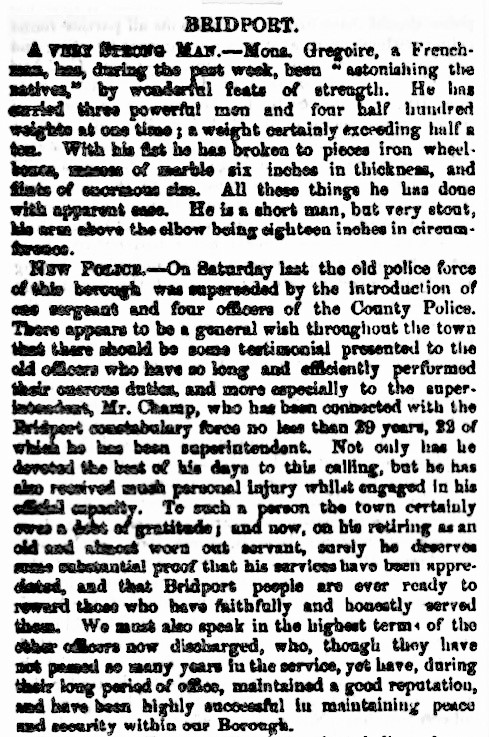
Bridport had its own policemen up until January 1858, so that was why Beaminster was the Divisional HQ. The police station (hopefully above) on South Street, is now the library, and was manned by a Sgt and about four men until it became the local HQ sometime in the 1920’s.
When it became the Divisional HQ it was extended to the rear, and the station stayed as the Divisional HQ until 1946.
In that year the fire service took over the station and the police moved into a new building in St Andrews Road by the junction of Barrack Road. The building on St Andrews Road did not last long as it was demolished and a new building of similar size was built and it is now retirement flats. That was completed in 2003 and it is now called “Peelers Court”. The only thing that remained of the old St Andrews Road Station is the pillars at the entrance to the approach drive. Here is a late photograph of the St Andrews Road station, it only lasted 57 years, which is quite a shock as it looked and seemed so solid. Thanks to Rich SYMES for the photograph.

For about 10 years I could not find a photograph of the original police station in South Street, but now I think I have found one. So now I have realised that the first photograph of what I thought was the original staion is wrong, it’s actually the next building.
This photograph/card was on ebay in August 2022, although the seller was not aware it was the original police station, or even the police station. The photograph/card as you can see is dated 14 july 1911. This photograph was sent to his home town by resident Bridport PC 22 Frank DAY.
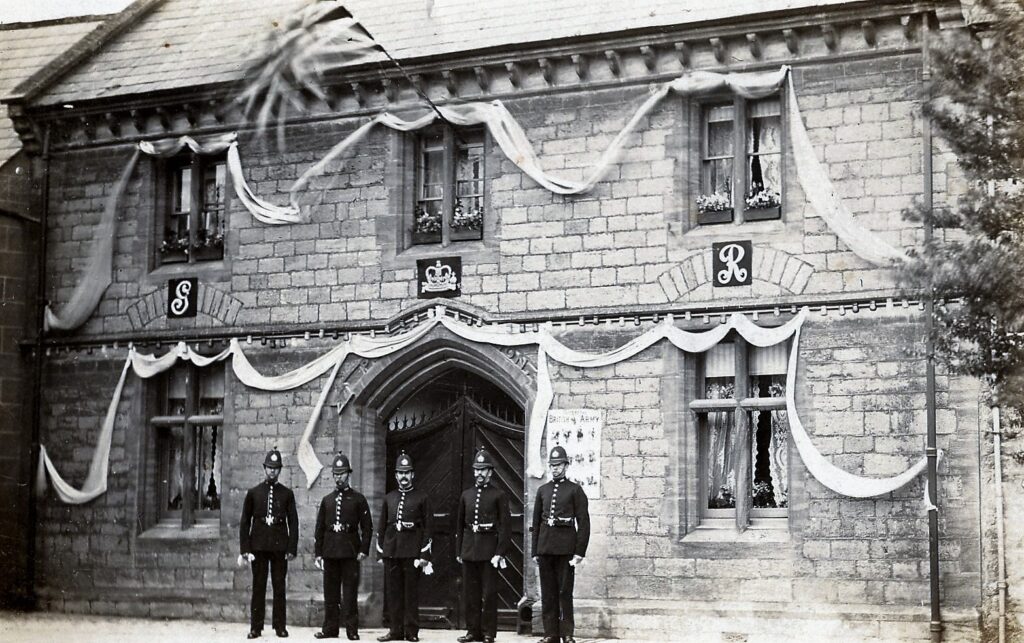
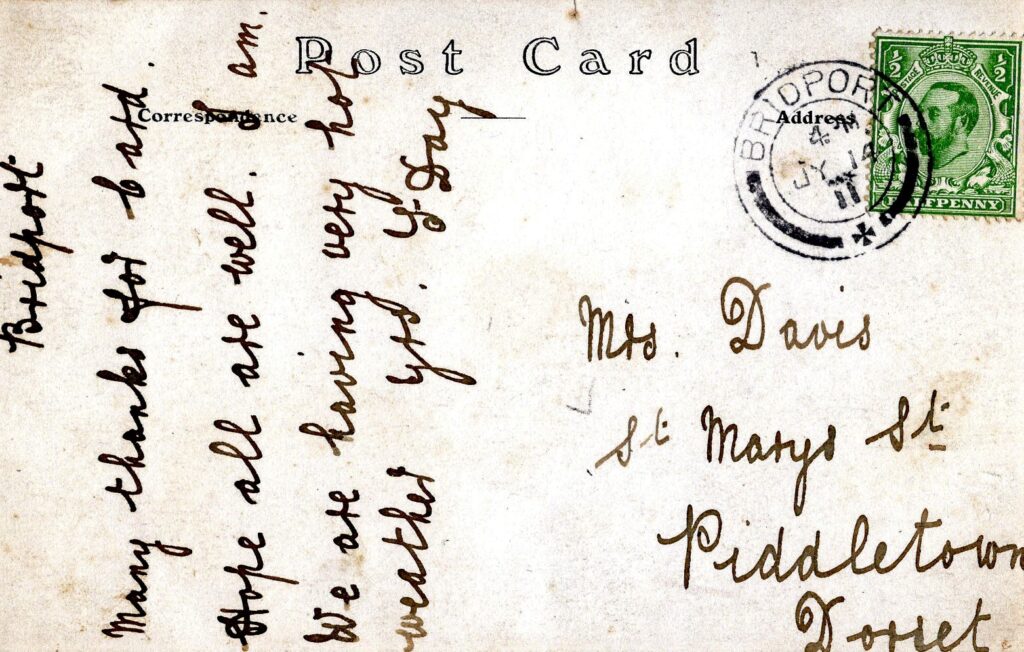
LYME REGIS
—————–
The Borough Force of Lyme Regis amalgamated with the County Force on 29th March 1860. The original police station in Lyme Regis was in Coombe Street which was a Sgt’s sectional station and had room for two families and a single constable. It was built and completed in 1869 however it was not manned until the following year. It was only a small building so the court room was at the upper council chambers in the old town hall, adjacent to the museum in Bridge Street. Below are some photos taken in 2020.
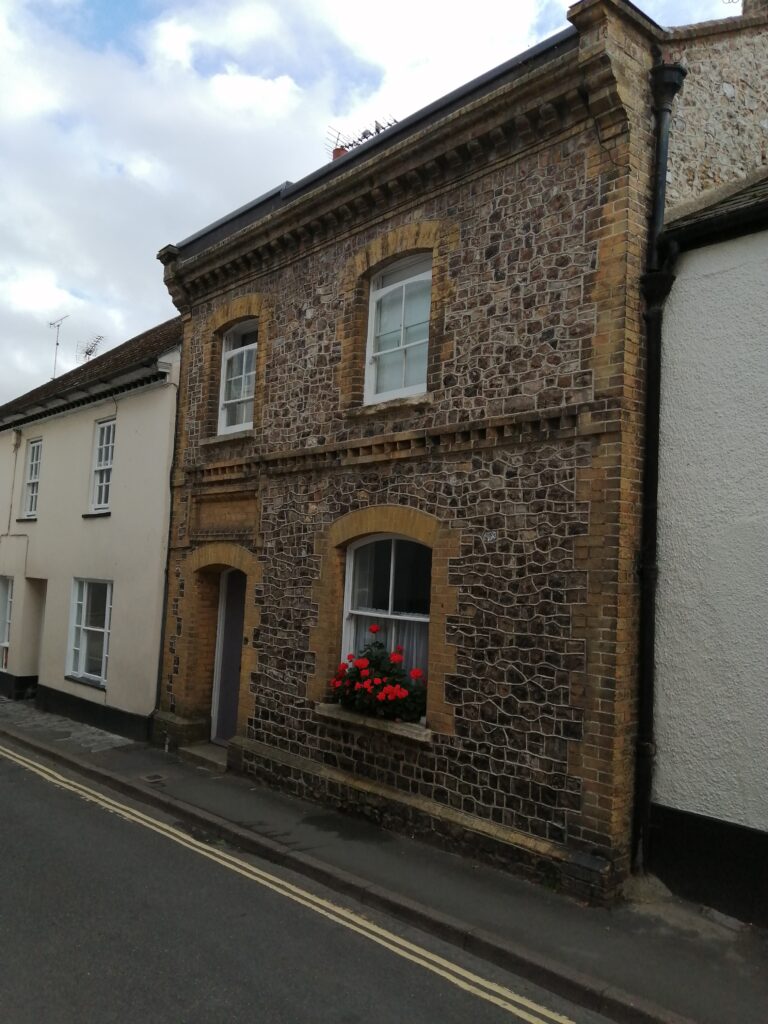


This station was disposed of as a private residence in the 1920’s and a new station was built in Hill Street opposite Wood mead hall and gardens. The new station in Hill Street consisted of a charge room, cells, a Sgt’s and Constables house and a flat for a single man, this has also now been disposed of and Lyme Regis no longer has a police station.
Above photographs taken at an angle as the street is very narrow.
CERNE ABBAS
———————
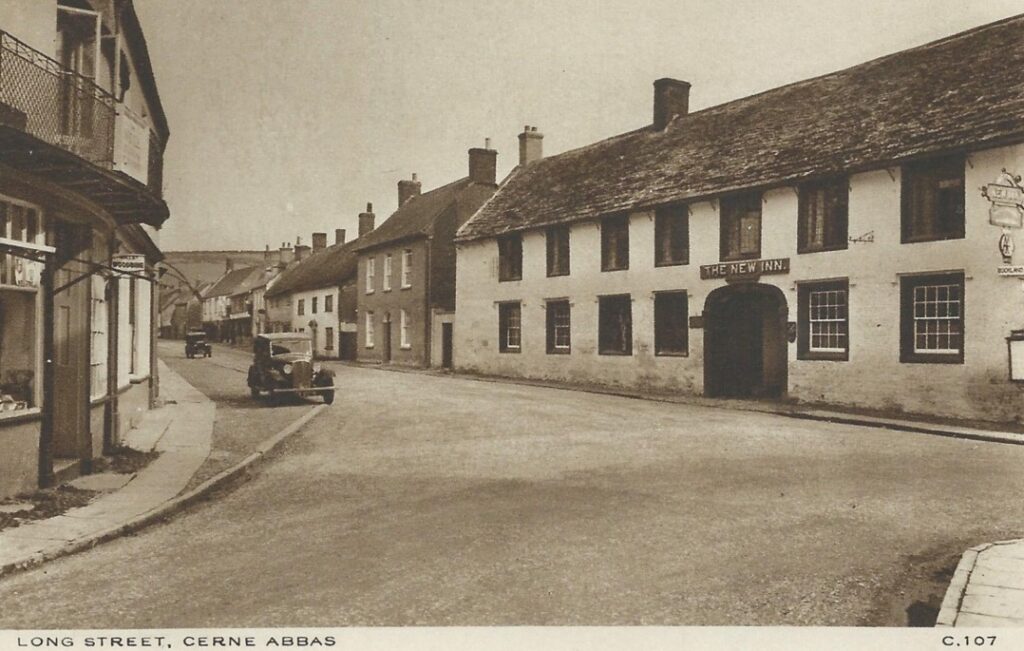
In Jan 1857 the New Inn, in Cerne was used for the petty sessions, but there was no lock up and next door to the pub, a site of a house, destroyed by fire was thought to be able to be purchased on reasonable terms.
After the Chief Constable and county surveyor checked the site, they contacted the owner, Lord Pitt-Rivers, who agreed to grant a lease for 60 years. Rivers was one of Dorset’s wealthiest land owners, whose estate stretched from Hinton St Mary near Sturminster Newton to beyond Bridport.
The size of that land was 90 feet by 60 feet, which was enough for a residence that could house a married Supt and one married constable, a lock up with three cells, stabling for two horses and a justice room which would cost 1,500 pounds. An advert was put in the local papers in December 1858 asking builders to tender for the contract.
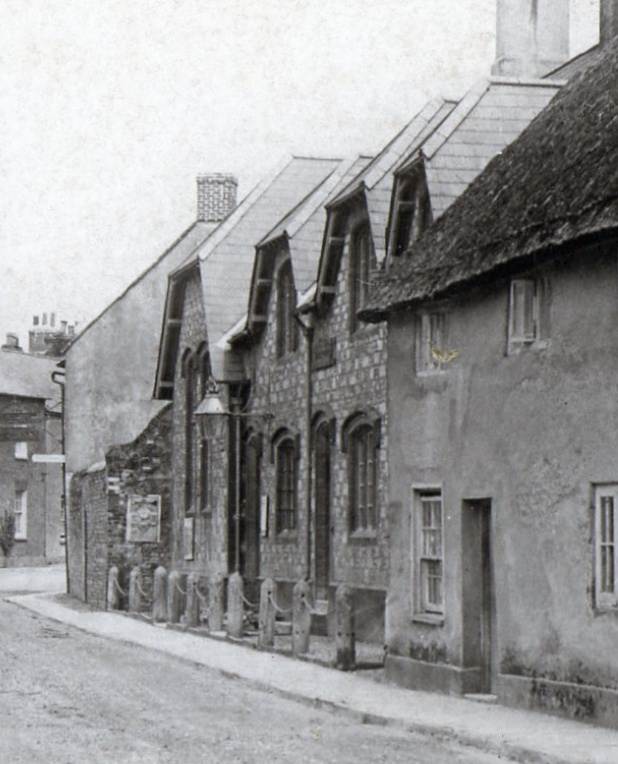
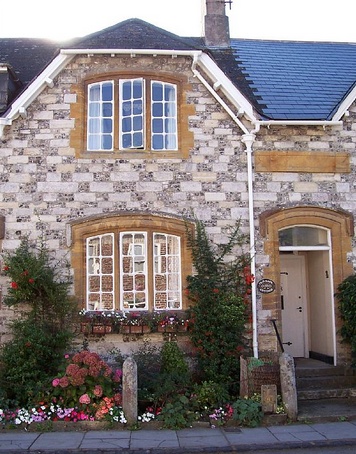
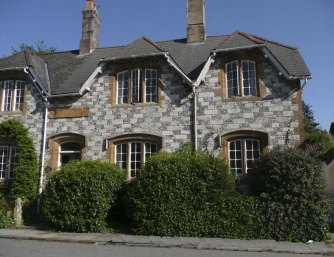
The police station and court house were completed in 1861 and are still standing.
The cost of the building was 1,207 pounds exclusive of the court house. This station and court house was disposed of in 1953 although the court ceased to exist when it was transferred to Dorchester in 1936. A smaller building was built for the police in the form of two cottages in Back Street (west of the village) still as a section Sgt’s station.

WAREHAM
—————
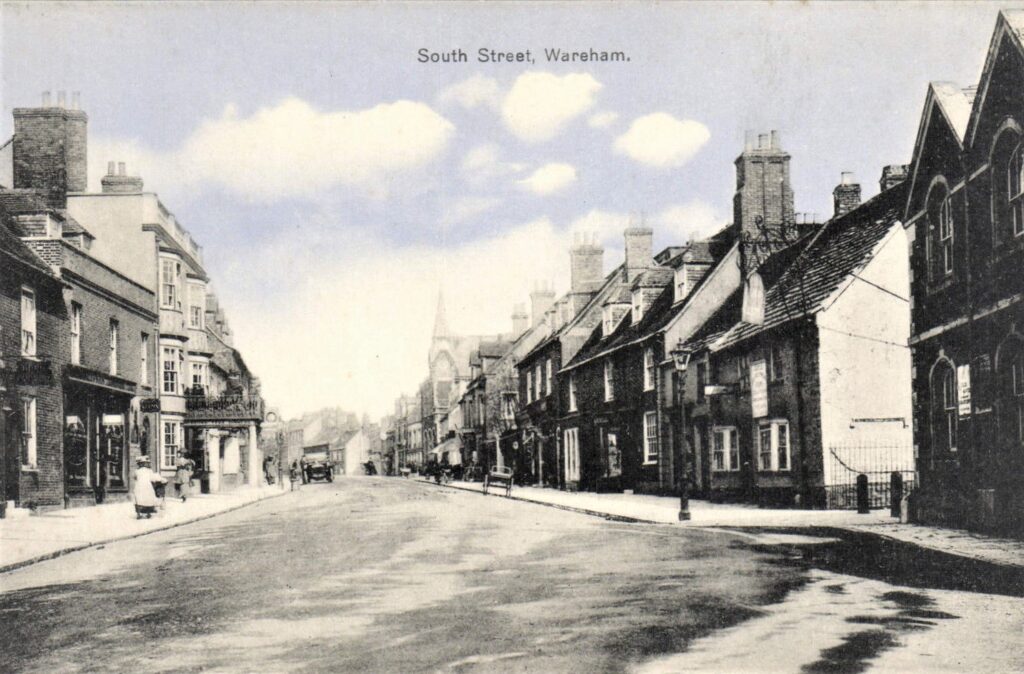

In Jan 1857 the town hall was used for petty sessions but there was no lock up, but there was a site on South Street belonging to Mr Colcraft which could be obtained at a reasonable price.
Wareham was one of two chartered boroughs, where courts were heard before the municipal corporation acts came into force.
The town hall was selected for the holding of the petty sessions court (borough council chamber) underneath the block tower at the Town Cross. There was no lock up provided, so it was essential to expedite the purchase of a site for the police station and this was acquired from Mr Calcraft for 450 pounds in South Street. An advert was put in the local papers in June 1858 for builders to tender for the contract. The building consisted of residences for a Supt and two constables, with offices and cell block and stabling and was completed in 1860.
Almost half of the station is shown on the right in the south street postcard above and then the black and white photo is from “Bobbies on the beat” book, thanks to Melvin HANN. The building was eventually condemned by one of HM Inspectorate and vacated in the eary 1960’s for a new station in Worget Street . There was a number of police houses built in Encombe Road prior to the current station and the Fire Station.
There were also sectional stations at Swanage and Wool.
Photographs below were taken in 2018.
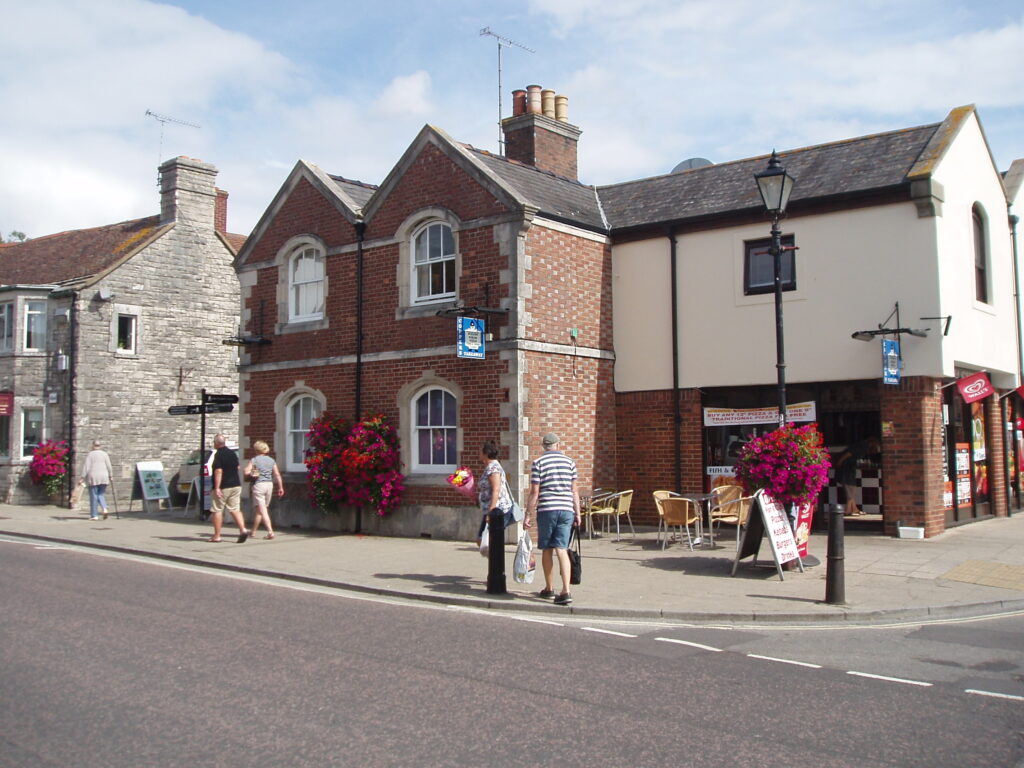
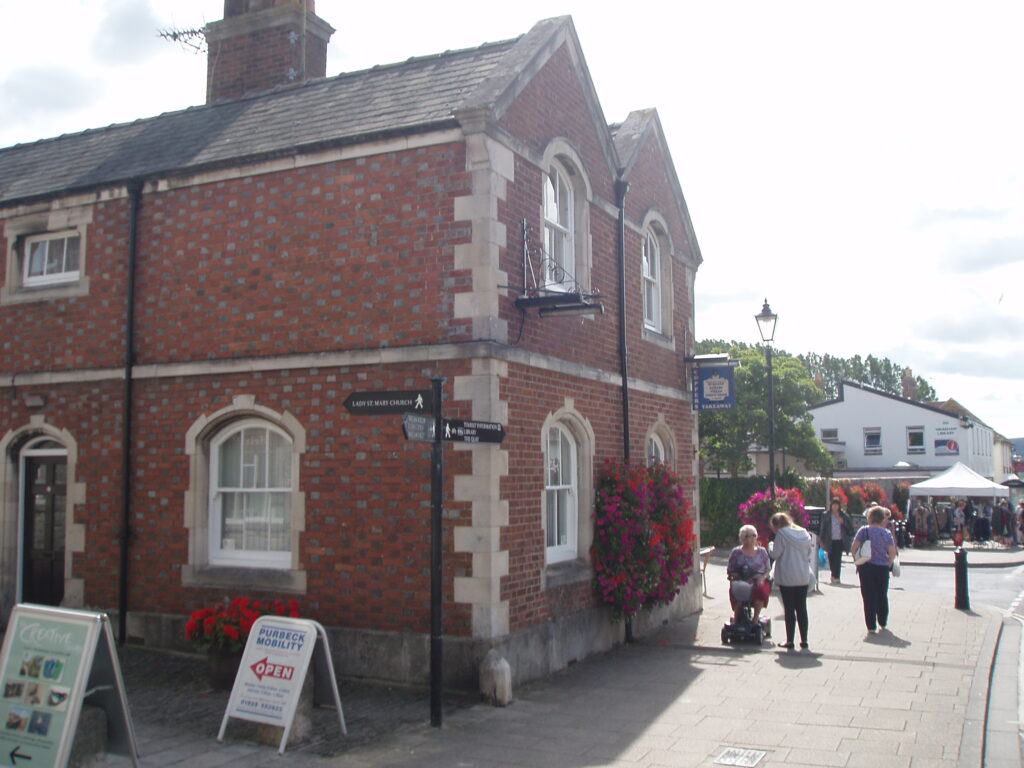
SWANAGE
————–
The old town lock up was situated at the rear of the old Town Hall and is still evident today but not in use. In the 1880’s George BURT a local builder, wanted to build a large station from local Purbeck stone. BURT made a great deal of money after shipping stone to London to major buildings. This never happened until about twenty years later when the DSJC eventually secured the funds.
A new police station was built at the end of the 19th century and ready for use by 11th April 1900. The cost of the station was 3,624 pounds which did not include the attached Justice rooms. It was described as a fine purbeck stone building and residences built for policemen, with offices and a cell block adjacent to the parish church, under the control of an inspector.
Wool was a sectional Sgt’s station which was built adjacent to the railway station with an office and personal accommodation. Before this building was erected in the 1950’s the Sgt was in residence in an old thatched cottage in the village centre near the pond on the eastern side.
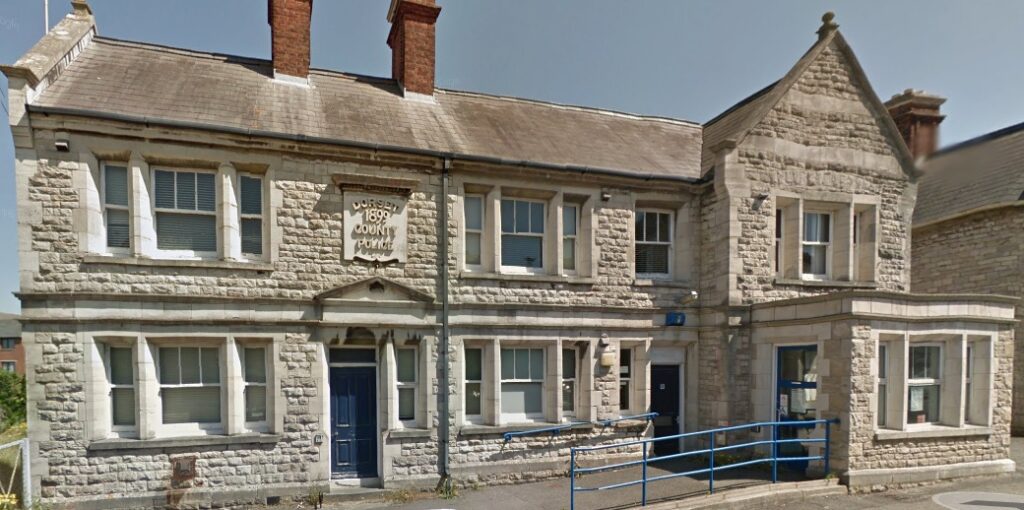

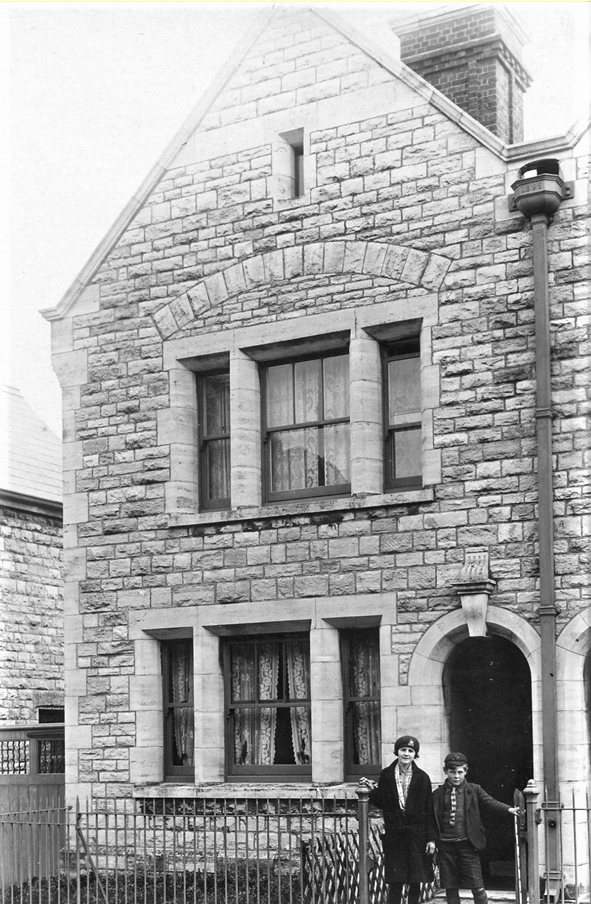
Above a very young Victor Tom DAVIS, when his father was stationed at Swanage in the late 1920’s
BLANDFORD
—————–

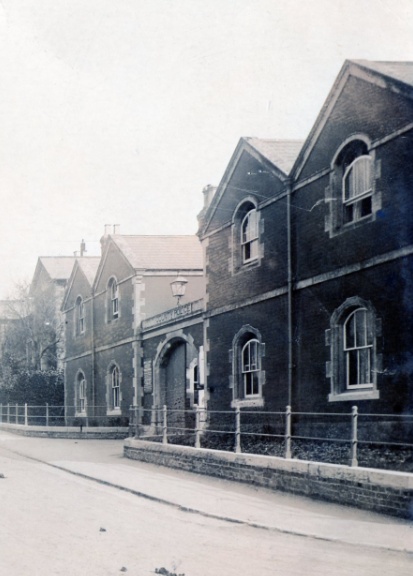
In Jan 1857 the town hall was used for the petty sessions and there was no lock up, but the committee said a proper site could be purchased for erecting a station house and strong rooms at a reasonable price. In June 1858 an advert was placed in the local papers for builders to tender for the contract.
The Town Hall in the square at Blandford Forum, to give the borough its ancient title was selected for use as the petty sessions court and was still being used up until the 1970’s.
Initially on formation of the Force it was difficult in purchasing a site for the police station until eventually a site was acquired from the Dorset railway company. However, things did not go smoothly and the railway company after allowing the police committee to purchase the site then changed their minds and gave the police a notice to quit.
As a result, there was a law suit and the matter was put to arbitration, under the powers of the land clauses consolidation acts which voted in favour of the police and the railway company had to pay 304 pounds costs.
A second site was then purchased in Salisbury Road for 300 pounds and the station was built at a cost of 1,454 pounds. This consisted of accommodation for a Supt, Sgt and constable cottages, a cell block and stabling.
This building was disposed of in the 1950’s as highly unsuitable for police purposes and is now private dwellings. A new much larger site was purchased further up Salisbury Road which was adjacent to the North District council offices, where it was then made a sub divisional HQ with offices under the control of a Chief Inspector, with Shaftesbury and Gillingham being sectional stations.
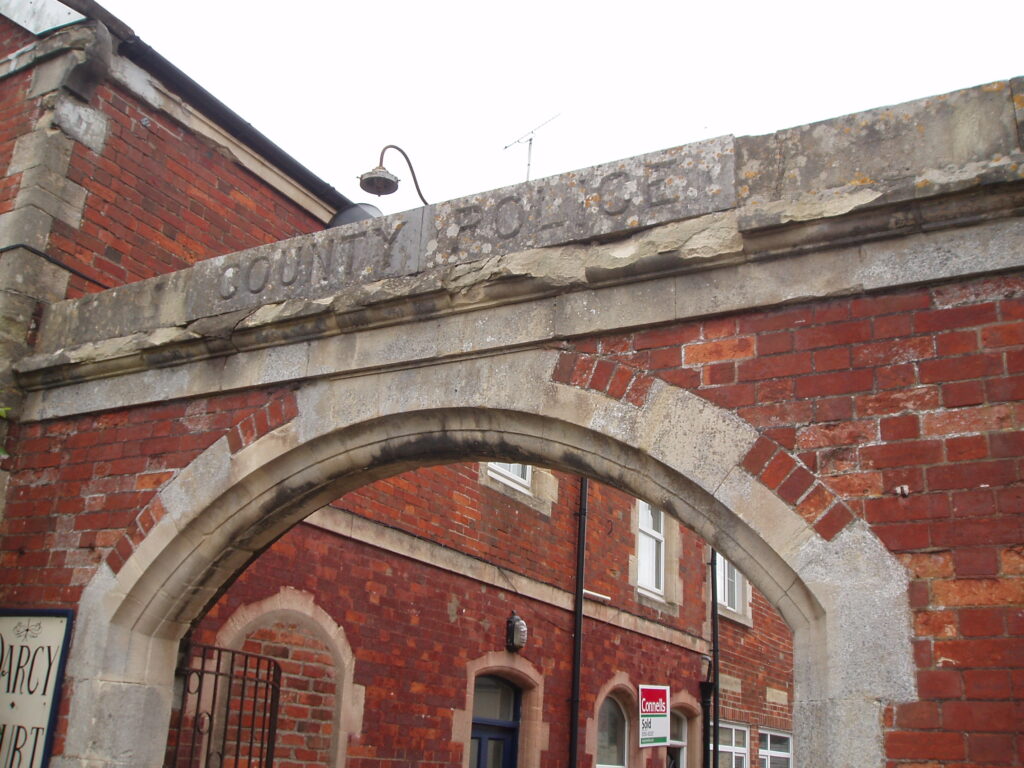
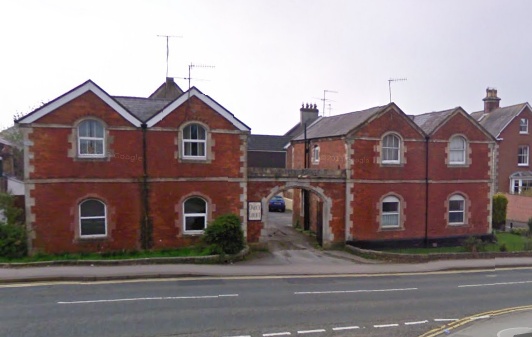
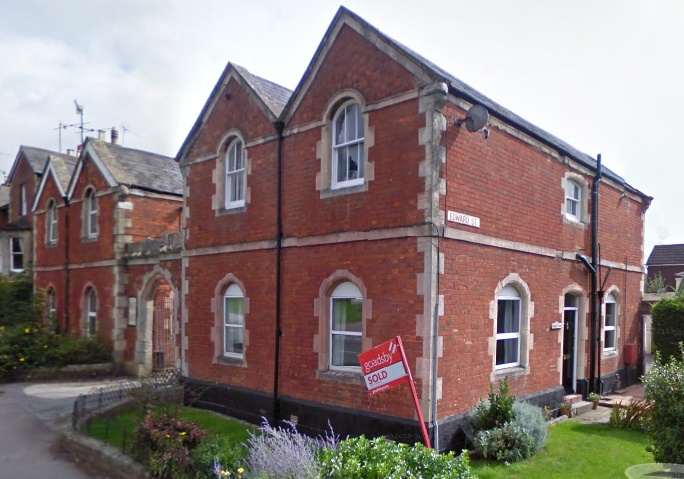
Photographs above were taken in 2015.
SHERBORNE
—————–
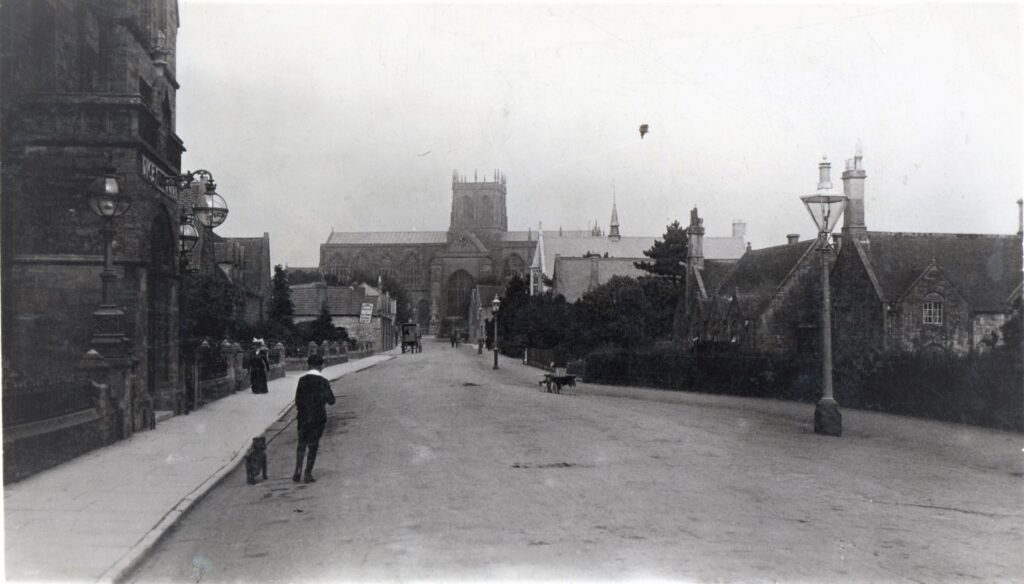
In June 1858 an advert was placed in the local papers for tenders to build the first police station. Land on Digby Road had been found not far from the centre of the town and the station was completed and occupied by the summer of 1859.
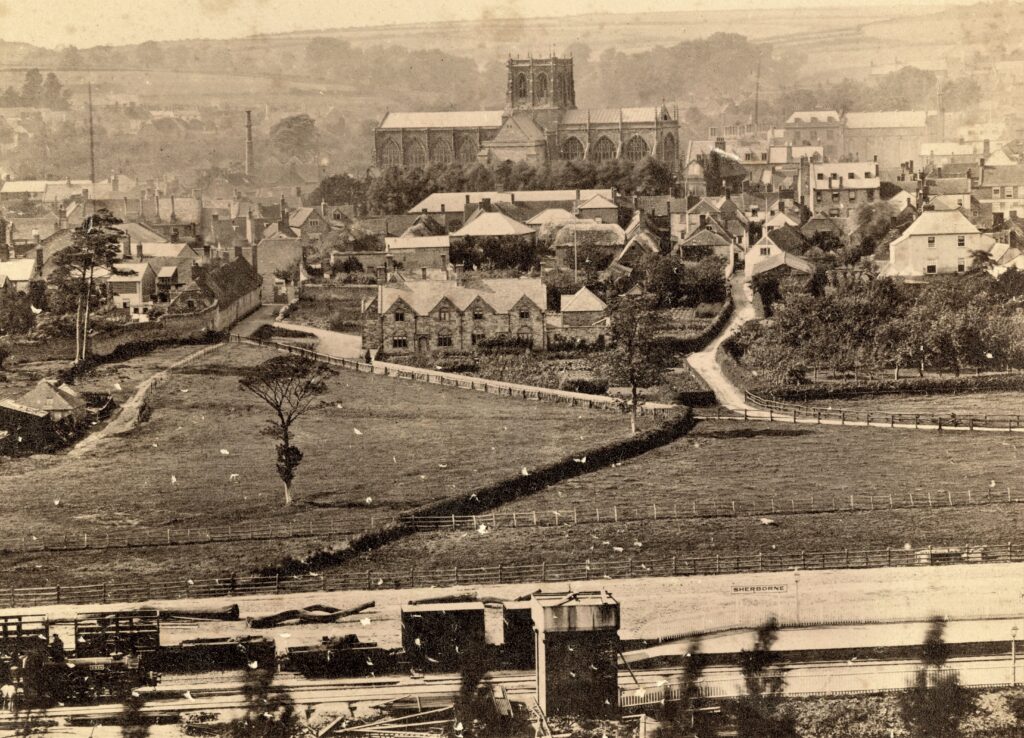
This is the earliest photograph I have come across of the station . Looking closely you can also see a smaller seperate building to the right, which must have been the stables. Rachel HASSALL , the sherborne school archivist has allowed me to use it and has said it was taken in 1860.
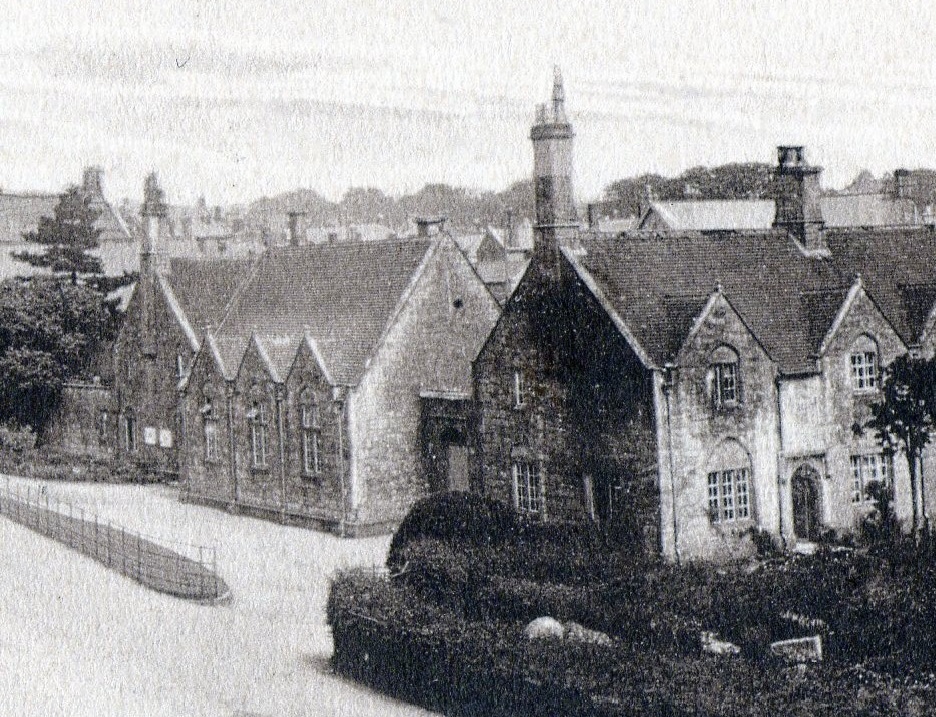
The above postcard also shows the two houses to the right and the main station building and cell block facing the road. My great grandfather was in charge of the station in 1910 till 1920 and my grandfather lived here as a boy. He returned as a senior PC in the 1930’s and was appalled at how bad the state of the buildings were.
It looks like the buildings, were not demolished until about 1964 and the photos below were taken at that time and passed on to me by Melvin HANN.
Feb 2021: I now have had this information from Alan BRADBURY.
In late 1965 the station closed and we went to the Old Civil Defence Hut to carry on from there. The hut was not ideal, no cells or secure rooms rooms, but we managed. The prisoners were taken to Dorchester and the little car park at the bottom of Acremen Street was used for officers cars.
Some time after the move Sherborne Museum had a small display about the local police and said that the station closed in late 1964. In view of this I took them a photo showing our new Section car, CTK 695 C parked in the yard inside the station.

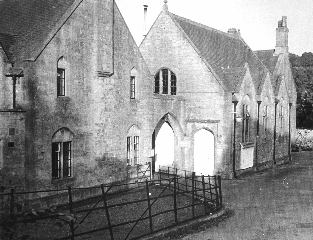

The above photograph shows the three small windows of what looks like the cells, and the rubble from the two police houses piled up on the left to level the ground.
My grandfather Vic, who lived in the station as a boy and as a PC wrote:
The station was built in 1858 with its court house, stables, coach house together with the Supt’s house, an office, three cells and two police cottages.
“The whole building was set lower than the main road and there were two entrances from Digby Road with steep little declines and dividing the two was a half moon shaped arch of grass outside with iron railings abutting the road. Entry by the station yard was by means of a stone archway, with two heavy wooden doors studded with iron which filled the whole space of the archway. This was to prevent the prisoners escaping when being exercised in the yard. Over the archway was inscribed in the stone was the old English lettering: DORSET CONSTABVLARY.
Regretfully when the station was demolished those inscribed stones were buried underneath the footings of the new station and the rest of the buildings stone work also helped to fill in the site and bring it up level with the roadside. A small amount of the old stone work was for facing the new station. I maintain that the old building was much more architecturally pleasing than the new”
The below new station was thought to have been opened in 1966.
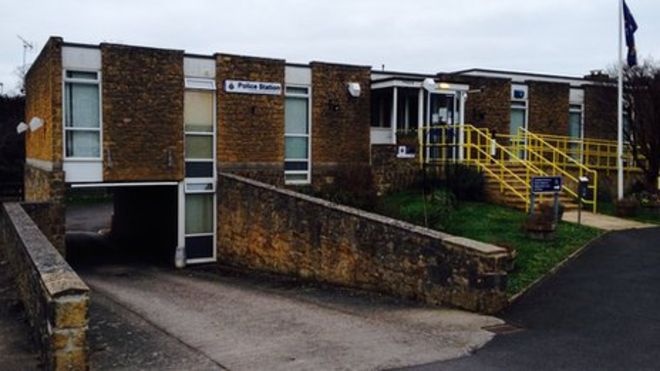
SHAFTESBURY
——————–
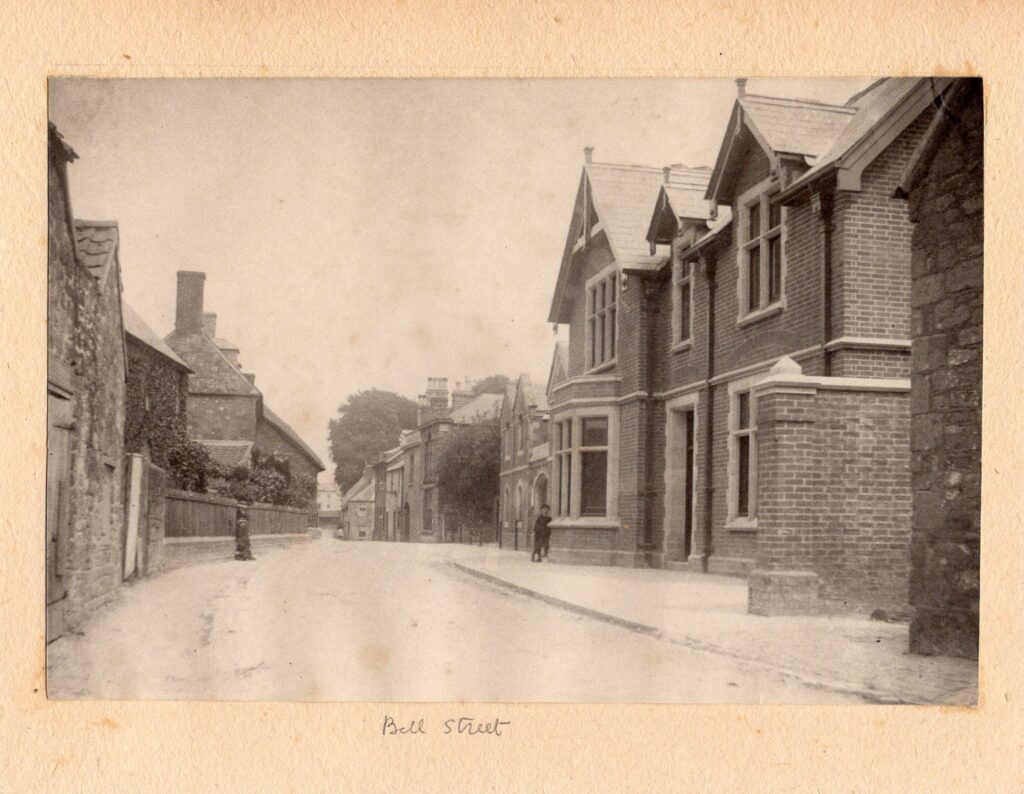
Shaftesbury and Sturminster Newton, already had stations, but new ones were required and an advert was put in the papers for tenders in Jan 1859.
In Jan 1857 the town hall was used for the petty sessions and there was already a lock up, with residence for two constables at Shaftesbury, besides two cells belonging to the borough police which was considered amply sufficient. There was also a lock up cell at Gillingham and another at Fontmell Magna with residence for a constable and at this time a new site for a station could not be ascertained.
This ancient borough had its own police force in 1849, but it was not fully absorbed within the County Force until 1873. There was a lock up with residences for two constables in the borough with the addition of two cells and this was considered sufficient until the new station was available. Mention was also made of a lock up cell at Gillingham, which was near the fire station and senior school and there was another lock up at Fontmell Magna with residence for a constable.
In 1859 plans were put in hand for the new station and the Duke of Westminster placed an eligible site available at a cost of 200 pounds in Bell Street, with residences for three officers with offices.
It was completed and occupied by Oct 1859 although in 1861 the Supt at the time, Richard HARE complained that it was damp and poorly heated. However it remained the station at 25 Bell Street until it was condemned in 1920 by HM Inspector of Constabulary.
A new site was found in Angel Lane near the general post office. This new station had room for four residences and lasted till about 1954.

STURMINSTER NEWTON
——————————
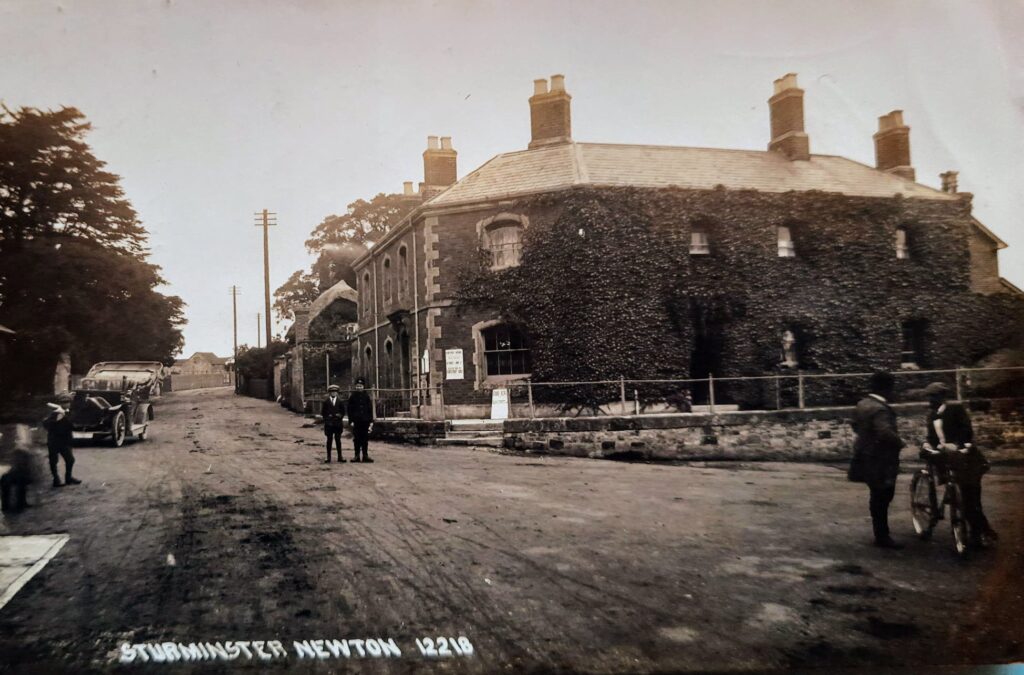
Photograph postcard used with thanks to Barry CUFF
This north market town was a place of agricultural importance situated in the picturesque Blackmore Vale. It had its own police force from 1849 to 1856.
In Jan 1857 the crown Hotel in the main square was being used for the petty sessions near the police station where there was a lock up already with a residence for a Supt however when it was desirable to add a residence for one or two constables. The general requisitions for a station is a residence for the Supt and two constables, three cells and a stable and cart house.
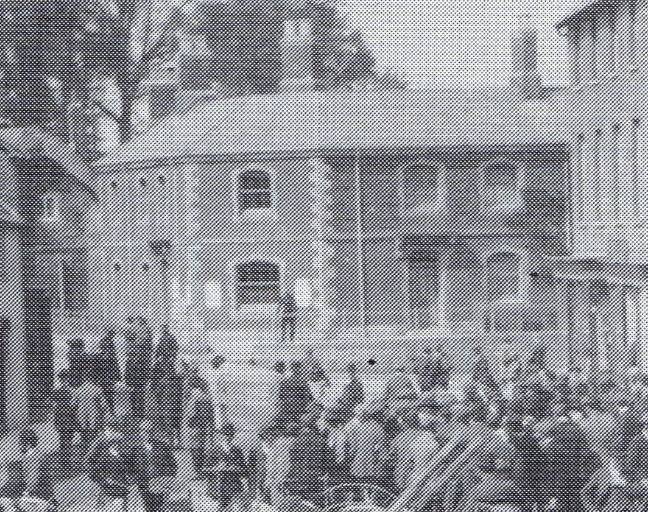
The trustees of the late Lord Rivers (Pitt-Rivers family of Hinton St Mary) were approached regarding a site to erect a new police station and court house. It was necessary to appoint a surveyor by the Justices to arrive at a proper valuation to be fixed by a Mr Poole of Sherborne. A disagreement by Lord Rivers own surveyor and Mr Poole then meant an umpire had to be appointed after a technical issue of Lord Rivers will. This basically meant that the County would have to pay for the extra expenses but this did not materialise and in June 1858 the site was purchased and was to be completed in Oct 1859 and ready for occupation at a cost of 1,635 pounds 17 shillings and 4 pence.
Things still did not run smoothly as the Dorset Central Railway raised some form of objection to the County buying this land and served a notice of its intention to apply to Parliament for the deviation of the proposed railway, by which it would appear that the compound would require part of the land. The Clerk of Peace was directed to “dissent” on the part of the County to the purpose of undertaking so far as the property of the County was affected. The Dorset Central Railway Company persisted in its application to purchase six perches of land occupied by the site of the police station, the same being within the lines of deviation and eventually after being assured by the County Surveyor (there being no architect) that it would not interfere with any part of the building, the committee then secured. The Dorset Central Railway at the time was very ambitious but in financial problems due to only one track so in 1862 joined up with the Somerset Central Railway for stability but then went into receivership in 1875.
The police station was a peculiarly positioned block of buildings on the top of a fairly high pavement which had a commanding view over the market square, local shopping centre of the township. The internal design was as there were lots of passageways and the offices centrally sited with very little privacy for the policemen living there. The court room which was at the rear had a glass domed roof and was next to the stabling

I am not sure when this building was no longer a police station , but it nice to see it still standing and used as in a prominent position.
I hope you enjoyed your tour around the county and of course if you can add to this post then please contact me via the contact form.
Part 2 will be published soon, if not already, by the time you have got through this post. It will have information and photographs from Gillingham, Cranborne, Wimborne, Poole, Parkstone, Branksome, Portland and Weymouth.